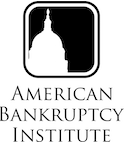Some cases really should not be all that difficult. However, when judges choose to divorce statutory text completely from any reference to underlying legislative intent and long standing commercial practice, inexplicable results follow.
Sites Committee
Committees
Editor's Note: The following article, "Tax Claims in Transnational Insolvencies: A 'Revenue Rule' Approach," won the prize for third place in
Subsequent to the Bankruptcy Abuse Prevention and Consumer Protection Act Of 2005 (BAPCPA), the “ordinary-course” defense to preferences has become significantly more prevalent for creditors seeking to defend against preference actions.[1] This act modified the requirements for the “ordinary course” defense, making it necessary only to
The claims process is a fundamental part of every bankruptcy case, in that it establishes the overall amount owed to a debtor’s creditors as of the filing date of the debtor’s case.
It has been a basic principle of U.S. commercial law that secured creditors have the right to credit-bid up to the full face amount of their debt at an auction of their collateral. However, the U.S. Court of Appeals for the Third Circuit recently created a bankruptcy plan exception to this well-established rule.
The first year of practice after law school is an exciting, yet humbling, experience for brand new associates, especially if starting in a field that is new and unfamiliar.
Certainty in business translates into increased expenses for both buyers and sellers, or in the chapter 11 context, debtors and creditors. The Eleventh Circuit Court of Appeals has increased debtors’ and creditors’ costs of doing business by issuance of its opinion in Marathon Petroleum Co. v. Cohen (In re Delco Oil Inc.), 599 F.3d 1255 (11th Cir.
The crash in the residential housing market has effected many Americans, but the downturn has had a particularly disruptive effect on many senior citizens, especially those seeking to gain admission to, or currently living in, continuing-care retirement communities (CCRC).
The Patient Protection and Affordable Care Act (PPACA), passed by the Senate on Dec. 24, 2009, and signed into law by President Barack Obama on March 23, 2010, is the basis for the U.S’s current experiment in health care reform.









